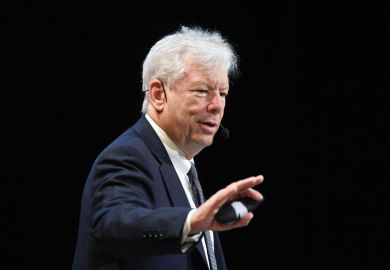Both American and worldwide higher education doubtlessly have huge problems – many of our own making. But identifying them accurately is much harder than many commentators appear to think.
The academic presses churn out book after big book purporting to diagnose the Big Problem with modern higher education and prescribing its cure. But, invariably, they fall far short of what is required. Indeed, you might almost say that one of the chief problems higher education faces is confusion over how to both ask and answer fundamental questions about the contemporary situation and its tangled paths.
Such books prompt discussions even among self-proclaimed specialists, but their central complaints typically exist outside historical time and meaningful context. For instance, they often hark back to some presumed golden age, but that “golden age” from which we have fallen is never dated or properly evidenced.
The latest example in the genre is The Real World of College: What Higher Education is and what it can be, by Harvard academics Howard Gardner and Wendy Fischman. Typical of the literature, it begins with the historically, interpretively and logically false opposition of “learning” and “earning”, the idea being that modern higher education has developed too much focus on the latter, at the expense of the former.
I was an undergraduate in the late 1960s, as was Gardner. At that time, the same disconnected, unhelpful pressure cooker – “earning is more important than learning” – overheated on the front-burners even at our elite universities. It has never stopped: not, at least, since the advent of the G.I. Bill at the end of the Second World War, prompting the expansion of different kinds of universities and populations, with their variety of aspirations.
In reality, “learning” and “earning” always coexist, with regular tensions, contradictions and points of reinforcement. More broadly, “higher education” as a variegated set of institutional systems, has never been fundamentally “broken” or in complete repair, and it is highly misleading to think in such terms.
What is the “real world of college”? Obviously, there is no single answer to that question. The literature skews toward the elite universities that are home to most of the Big Book writers, but not all contemporary higher education can be modelled on what seems to Harvard, Chicago or Stanford professors to reflect their students or be appropriate for their undergraduates. Consciously or not, their research designs and samples are biased and their diagnoses myopic.
On the absolutely fundamental matter of comparisons and advancing meaningful generalisations, Fischman and Gardner note in a blog post that they “were asked about patterns and trends of individuals representing traditional demographic differences...[but] prioritizing differences among individuals may actually work against and undermine our central recommendation: colleges (both independent and within universities) need to be singularly focused on the broad intellectual development of all students….we believe that American colleges and universities need to focus on the development of what we call Higher Education Capital.”
Drawn directly from expectations stimulated by decades at Harvard, Higher Education Capital – HEDCAP – is a rhetorical play on the complicated and messy fields of “human capital”, which derive from debates in economics since at least Adam Smith and Karl Marx. It is not a “measure”, as the authors want HEDCAP to be. In more ways than I can enumerate, without controlling for institutional and other basic distinctions among students and institutions, the approaches and the discourse are fallacious and elitist.
I understand that editors favour big claims and clear narratives. I understand that readers only have so much time and attention to pay to popular expositions of research, however many years it may have taken to conduct. But unless real problems are identified and explored with due care, with a full grasp of historical, demographic and other contexts, any attention devoted to the solutions is wasted.
Virtually the entire genre of higher education writing currently sinks in a sea of conceptual obscurity and misunderstanding. Along the way, we lose sight of the real historical, contemporary and possible futures of higher education, in all its guises, missions and circumstances.
Harvey J. Graff is professor emeritus of English and history and an Ohio eminent scholar at The Ohio State University. He is the author of many books on social history, with Searching for Literacy: The Social and Intellectual Origins of Literacy Studies forthcoming.
Register to continue
Why register?
- Registration is free and only takes a moment
- Once registered, you can read 3 articles a month
- Sign up for our newsletter
Subscribe
Or subscribe for unlimited access to:
- Unlimited access to news, views, insights & reviews
- Digital editions
- Digital access to THE’s university and college rankings analysis
Already registered or a current subscriber?








